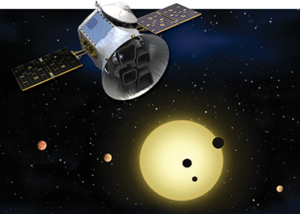UPDATE: On April 18th at 6:51 PM, EDT, SpaceX is set to launch the small counterpart and addition to the intrepid Kepler Space Telescope now operating with limited control propellant and hence, limited time during the newly designated K2 mission.
Having its original mission cut short due to general failure of a second of the observatory’s four reaction wheels, the principal controls that keep the instrument pointed and navigable, NASA engineers and scientists developed a workaround enabling Kepler to continue its mission of exploration and discovery. With the new mission, titled K2, the orbiting observatory continues its program of discovery, albeit with limited time left as it isn’t clear how much control propellant remains.
Mounted atop a SpaceX Falcon9, TESS will be launched next Monday, beginning a two-year survey of the entire sky, monitoring fluctuations of all bright stars in the solar neighborhood. The principal goal of the TESS mission is to detect small planets with bright host stars in the solar neighborhood, monitoring the brightnesses of more than 200,000 stars during its two-year mission, searching for temporary drops in brightness caused by planetary transits. Any candidate stars will be catalogued to be studied in further detail by large, earth-based observatories and the James Webb Space Telescope, now set to be launched mid-2020.
TESS consists of four 10 centimeter (4″ diameter) wide-field cameras, each equipped with a 16.8 megapixel low-noise, low-power, MIT Lincoln Lab CCID-80 detector sensitive to 600nm – 1000nm (red – near IR) light. After launch and successful deployment, the satellite will be placed in a highly elliptical, High Earth Orbit (HEO), with a 108,000 km (67,000 mi) perigee and a 373,000 km (232,000 mi) apogee and an orbital period of 13.65 days. Every 13.7 days at perigee, TESS will downlink the data it has collected during the orbit over a period of approximately three hours.
The TESS Science Center, which analyzes the science data and organizes the co-investigators, collaborators, and working groups is a partnership with MIT’s Physics Department and the Kavli Institute for Astrophysics and Space Research, the Smithsonian Astrophysical Observatory, and the NASA Ames Research Center. The raw and processed data are archived at the Mikulski Archive for Space Telescopes, at the Space Telescope Science Institute.
A TESS quick-fact sheet is available from NASA here.
If you enjoyed this article, please consider supporting us with a modest donation
or through a subscription on our Patreon Page



